How Do I Replace My Existing Wired Panel With the Qolsys Hardwire 16-F?
You can replace an existing wired panel with the Qolsys Hardwire 16-F by marking all zone wires to the existing panel. Next, carefully move the zone wires from the original panel to the Hardwire 16-F. Finally, enroll the module and zones with the panel, and test to be sure that they work.

When deciding to replace an existing wired alarm panel with a wireless all-in-one model, there is scarcely a module more helpful than a wired to wireless converter. There have been several variations of these modules provided by different manufacturers. But in this FAQ, we will concentrate on the Qolsys Hardwire 16-F. It is the only converter module as of August 2019 that allows you to use 2-wire smoke detectors. This means that the only type of wired sensor that cannot be used with this module is a wired carbon monoxide detector. All other types of wired sensors can be used. The wired carbon monoxide detectors can be replaced by wireless models.
All zones that will be connected to the Qolsys Hardwire 16-F will require the use of a 4.7K Ohm resistor. These resistors are included with the module. This means that on early versions of the Hardwire 16-F, if existing resistors of a different value are already in place they will need to be removed and replaced with the resistors provided. If the existing resistors are at the panel, this will not be difficult. But if they are at the end of the zone wiring where they are supposed to be, then the process becomes a bit harder. For this reason, this is something you should verify before you commit to using the Hardwire 16-F. If your system is monitored, be sure to contact the monitoring station or your alarm dealer and put your system on test before you begin working on the system. This will prevent possible false alarm dispatch.
UPDATE: In week 40 of 2019, Qolsys upgraded the Hardwire 16-F to support end-of-line resistor learning for resistor values ranging from 1k to 10k. This is available for every zone on the module, with the exception of Zone 16, which must always use a 4.7k resistor. For more information on EOLR learning for the Hardwire 16-F, please see this FAQ. If you want to check and see if your Hardwire 16-F unit supports EOLR learning, then please review this other FAQ.
Prepare the Panel
Once the question of resistors and carbon monoxide detectors has been sorted out, you're ready to begin. The first step is to get familiar with the existing panel and its hardwired zones. There should be a wiring diagram stuck to the inside of the alarm panel's metal enclosure, sometimes referred to as a can. If the diagram is missing, perform a search by the panel's model number and find the diagram online. Once you have it, study it to get an idea of which of the panel's screw terminals represent which of its zones. In many cases, you may not be familiar with the panel's zone layout. Maybe you have just moved into the house, and one of your first projects is updating the security system. If this is the case, one of the best things you can do is walk the system.
Walking the system is something that is most easily done with at least two people. One person stands at an alarm keypad, while the other person, preferably the person who will be doing the wiring work, walks around the house with a pad and pencil. Go to any area or opening that has a security sensor mounted. Open and close each door and window, and walk in front of each motion detector. If you have glass break sensors, carry a ring of keys with you. To activate the glass break sensors, tap the sensor then immediately jiggle the keys together in front of it. This is usually enough to cause a fault condition. Have the person at the keypad call out the zone numbers, and any descriptions they see as you fault each device. Write each one down as you go along. This will give you a list of zone numbers and descriptions to compare against the wiring diagram provided inside the alarm panel. It will also tell you if there are any zones that are not functioning properly.
Once you have a complete list of every device that exists within the system, come back to the panel. Compare your list with the wiring diagram. Don't be surprised to find that multiple devices are connected to a single zone input. This is often done out of necessity or convenience. Organize the list based on zone numbers. Carefully mark each wire at the panel to show its zone number. Most panels that support hardwired zones either require or provide an option for using resistors. Many installers choose to install the End-of-Line-Resistor (EOLR) at the panel screw terminals, instead of at the end of the zone where it should be. If that's the case with your panel, it will make your job easier. But please be aware that this is not the recommended wiring. For more information about resistors and how and why they are used, read this helpful FAQ.
In addition to the 16 zones supported by the Hardwire 16-F, a Tamper zone is also provided. This tamper zone is intended for use on those panels that have a Normally Closed tamper switch attached to the cover of the metal panel enclosure. If the cover is opened, the tamper zone is faulted. If your panel has one of these tamper contacts, wire it to the zone marked TAMPER (right next to the Zone 1 terminals on the Hardwire 16-F). If your panel does not have a cover tamper contact, you can either add one, or you can strap a short piece of wire across the tamper terminals on the module. The tamper zone is Normally Closed and is the only zone that does not use a resistor on the Hardwire 16-F. This zone can not be disabled, so if you don't intend to use it, you MUST strap it out.
In addition to zone wiring, powered devices such as motions and glass break detectors will also have a positive (+) and negative (-) power wire. The Qolsys Hardwire 16-F has an auxiliary power output providing 12 Volts DC and 500 mA of current that is suitable for powering these devices. All powered devices, with the exception of 2-wire smokes, will have their power wires moved to these auxiliary terminals. If the sum total of current required for your powered devices exceeds 500 mA, then you will need to provide power from another source, such as a power supply such as the Honeywell AD12612 or the Altronix SMP3. You can see an example of wiring a motion to the Hardwire 16-F, both zone and power wiring, in the diagram below:

Prepare the Module
Once the panel has been prepared to have all its wired zones moved to the Qolsys Hardwire 16-F, it's time to get the module ready for installation. The way that the Hardwire 16-F is made, it is assumed that the old wired panel will be removed from its metal enclosure, and the Hardwire 16-F will be installed in its place. This makes sense because all the original zone wires already come into the old alarm panel cabinet. In addition, it should also be mounted near a power outlet. The old transformer and its wires can be removed and replaced by the Hardwire 16-F transformer, which comes with its own pre-made wire. Connect the wires from the transformer to the +16.0V and GND terminals on the Hardwire 16-F. This module uses a DC transformer, so make certain you observe proper polarity when connecting the transformer wires to the module. The wire with the dashed line is positive. Do not power up the module at this time!
Next comes the battery. Because the Hardwire 16-F has its own connection to AC power, it requires its own backup battery. This is another reason installing it in the old alarm panel enclosure makes sense. The cabinet will be large enough to securely house the battery. The specifications for the Hardwire 16-F call for a 12Volt DC, up to 5 Amp Hour (Max) battery. This is not included with the module. The UltraTech IM-1250F1 is the 4.5 Amp Hour sealed lead-acid battery that Alarm Grid recommends for this purpose, assuming you need to purchase a battery. It is possible that the battery used by the old panel is still good, and that it meets the specifications for the Hardwire 16-F. If that's the case, by all means, use it. It is not recommended to install a battery with a larger Amp Hour capacity than the maximum specified by the manufacturer.
You may be wondering why it is recommended to install a transmitter inside a metal enclosure. The Hardwire 16-F comes with an antenna. It screws into a terminal at the top of the module (see diagram above). As long as this antenna is outside the metal enclosure, the Hardwire 16-F should be able to get its signals to the Qolsys IQ Panel 2 Plus or IQ Panel 4. The Hardwire 16-F transmits at 319.5 MHz and uses Qolsys' S-Line encryption. Be sure that the panel you have supports this RF frequency. Qolsys panels come in versions that will support other frequencies such as 345 MHz or 433 Mhz. The Hardwire 16-F will NOT work with one of these panels. Obstructions within the environment such as large metal objects, metal duct work, large appliances, or mirrors can affect wireless range. Be sure to thoroughly test the transmission path once the Hardwire 16-F installation is complete.
Metal enclosure shown with the Hardwire 16-F antenna sticking through the top:

Prepare the Swap
Power the original panel completely down by disconnecting the leads from the battery, and unplugging the transformer. Disconnect all the zone wires that were marked when you prepared the panel initially. Be sure to also disconnect any power wires associated with motion detectors or glass break detectors. These power wires may be twisted together with power wires from keypads and other types of modules. You will need to sort them out. It should be relatively easy. The power wires for zones, which are usually black and red, should be within the same wire sheath as the two wires that connect to the zone terminals. These zone wires may be green and yellow, or green and white. Wires for keypads and other modules should all connect to the keypad or expansion bus, which is usually three (3) or four (4) terminals together in a row. You will not be using any of these keypads or expansion modules.
The existing panel may have a wired siren connected. It is possible you may be able to use this siren with the Hardwire 16-F. In order to determine this, you will need to know how much current the existing siren draws. To find this out, figure out how many sirens are installed, and the model number of the siren(s). From there, information on the amount of current drawn can be found online. For now, just mark the wires as siren wires and disconnect them.
After disconnecting the zone and siren wires, proceed to disconnect any remaining wires from the original panel. You can twist these wires together and mark them as unused. Any old keypads or expansion modules that were connected to the original panel will no longer be used once you switch to the Qolsys IQ Panel 2 Plus and the Hardwire 16-F. Since the wires are already run, you can still leave them in place, even if the modules they're connected to are removed. You never know when they may come in handy at a later time.
The original panel can now be removed from the metal enclosure. Remove the screws that are holding it in place, and pull it from the can. Properly dispose of it through recycling. Whenever possible, the Hardwire 16-F should be mounted vertically with the antenna terminal at the top, as shown in the wiring diagram above. The printed circuit board for the Hardwire 16-F comes mounted inside a white plastic enclosure. This entire enclosure can be mounted inside the original panel's can. When the module is mounted inside a metal enclosure with a secured lid, there is no need to use the white plastic cover.

At this point, the Qolsys Hardwire 16-F should still be powered down. Carefully connect each pair of zone wires to an individual zone input on the Hardwire 16-F. Another unique feature of this module is that every zone has its own Zone + and Zone - terminal. No zone has to share a negative terminal with another zone. For this reason, it makes no difference whether you connect the resistor to the positive or the negative terminal when wiring in series. As discussed before, each zone requires a resistor of some value. For zones with Normally Closed contacts, the resistor will connect in series. This applies to most burglary devices, including door and window contacts, motion detectors, glass break detectors, etc.
Series wiring shown. In Series wiring, the resistor will connect with only one of the zone terminals, with the other end of the resistor spliced or connected using a wire nut or b-connector to the end of one zone wire. The second zone wire will connect to the opposite terminal from the one the resistor connects to:

Some special applications may call for a burglary device to be wired Normally Open. Additionally, Smoke Detectors, which are considered Life-Safety devices, must be wired Normally Open. Any Normally Open devices must have their resistor connected in parallel. The Qolsys Hardwire 16-F can support up to ten (10) 2-wire Smoke devices on Zone 16. The smoke zone must always use a 4.7k resistor, preferably installed at the last smoke detector on the zone. The smoke detector models that are supported are the System Sensor 2W-B, 2WT-B, and 2WTA-B. Smoke detector models should not be mixed within a single zone.
Parallel wiring shown. In Parallel wiring, the resistor will connect with both sides of the zone, across the two terminals:

Once all zone wires have been connected properly with the resistors, all power wires for powered devices have been connected to the Aux Power output, and the 2-wire smoke zone has been connected with the 4.7k resistor in parallel, it's time to power up the module.
For full details on using the Hardwire 16-F siren output, read this helpful FAQ. It is recommended that you complete all wiring to the module before the initial power-up.
Program and Test
First, pair the module with the Qolsys IQ Panel 2. Pairing the Hardwire 16-F to the alarm panel allows the panel to supervise the tamper on the Hardwire 16-F. It also allows the panel to control when the siren output is active. And it allows the panel to reset the 2-wire smoke zone after a fire alarm. To pair the module, follow these steps:
- Perform Memory Reset: It's a good idea to perform a memory reset before doing any other programming. To do this, hold down the Memory Reset button while applying power with the transformer. You can leave the battery disconnected at this point. Keep holding the Memory Reset button for three (3) seconds. The Processor, RF Xmit and EOL CAL LEDs will begin to flash rapidly. You can now release the Memory Reset button. The module has been factory defaulted.
- Power On: Unplug the transformer again. Connect the battery leads to the battery, making sure to observe proper polarity. Once the battery is connected, you can plug in the transformer. By connecting the battery first, you prevent a possible low battery condition from showing up during the first 24 hours of operation.
-
Start EOL learn: For newer modules that support EOL Learn Mode you can use any resistor value on the zone from 1k - 10k (with the exception of the 2-wire smoke zone which must always use 4.7k EOLR). This covers the common resistor values for most, if not all manufacturer's panels. Switching the Hardwire 16-F to EOL Learn Mode means that you are switching it out of UL Mode, so keep that in mind. In order to remain in UL Mode, all zones on the module must use 4.7k resistors. By default, which we set the module to in Step 1 above, the 16-F is in UL Mode. To switch to EOL Learn Mode, once more power down the Hardwire 16-F by disconnecting the battery and the transformer. Press and hold the EOL Learn button while plugging in the transformer. Continue holding the EOL Learn button for eight (8) seconds. All of the Zone LEDs should light, and the Processor LED will start to blink rapidly. The rapidly blinking Processor LED means that you have switched to EOL Learn Mode (when in UL Mode the Processor LED blinks slowly). Disconnect the transformer and follow Step 2 again to properly power the Hardwire 16-F back on.
Press and hold the EOL LEARN button on the module for one (1) to two (2) seconds. All zone LEDs should flash, and then turn off. The EOL CAL LED will light and stay lit. This indicates the Hardwire 16-F is in "Auto-Learn" mode. - Start panel learn mode: On the Qolsys IQ Panel 2 Plus, swipe down from the top center, go to Settings > Advanced Settings > Enter the Installer or Dealer Code (1111 or 2222 by default) > Installation > Devices > Security Sensors > Auto Learn Sensor. The panel is now in learn mode.
- Learn in the module. Fault the Hardwire 16-F by either opening and closing the lid of the metal enclosure (if a tamper contact exists), or by loosening one side of the tamper circuit and pulling the wire loose to open it, and then returning the wire to normal and tightening it back down.
- Program the zone. On the Qolsys IQ Panel 2 Plus, accept the serial number learned in from the Hardwire 16-F. The Sensor Type should be "Hardwire Translator", and the Sensor Group should be "13-Takeover". By default, the Sensor Name will be Hardwire Translator, but this can be changed if desired. Chime Type is None, Voice Prompts are Off, and Source should be S-Line.
Once the Hardwire 16-F has been paired with the panel, then zones 1 - 16, or however many are used, also need to be paired. Following the same steps as shown above, activate each zone connected to the Hardwire 16-F. Once the appropriate serial number has been learned, accept the serial number by pressing OK on the panel touchscreen. Then program the parameters for each zone. Every zone will learn in as a Door/Window by default, so be sure to make the appropriate changes for each one. As each zone is tripped, its zone LED will come on and stay on until you exit the "Auto Learn" mode on the Hardwire 16-F. This will help you keep track of which zones have been paired.
To pair the 2-wire smoke zone with the panel, press and release the test switch on one of the smokes connected to the Hardwire 16-F. The appropriate serial number for that zone should appear on the panel. Program the remainder of the zone appropriately for a smoke detector zone. Sensor Type should be Smoke Detector, and Sensor Group should be 26-Smoke-Heat. Sensor Name is completely customizable, and Source should be S-Line. Once all zones have been programmed into the Qolsys IQ Panel 2, press the EOL LEARN button again on the Hardwire 16-F to exit "Auto Learn" mode. The EOL CAL LED will go OFF. Finally, press the Home icon at the bottom of the panel screen to return to the home page.
Determining If Existing Zones Have Resistors Installed
If you are unsure if your existing hardwired zones have resistors installed at the end of line, you can use the Hardwire 16-F to help determine this. Follow the steps above until you get to the point where you are beginning to program inputs 1 - 16 from the Hardwire 16-F. You should have put the module into 1k - 10k EOL Learn Mode, and in Auto-Learn with a flashing EOL CAL LED. Fault and restore zone input 1. Even if there is no resistor on the zone, it will cause the zone LED to light, however it will not transmit anything to the panel.
Power down and add one of the 4.7k resistors to the zone in parallel or series, as required. It is best to start over by performing the Master Reset and this time, since you'll be using the 4.7k resistors provided with the Hardwire 16-F, you can leave the module in UL Mode. Delete any zones previously learned into the panel from the module, and then follow the steps above to learn it back in. Once the tamper and zone input 1 have been learned back into the panel, exit again and test. If everything with the input works now, the zone input LED lights when you open and close the zone, and the serial number is learned into the panel then you can go through the steps to add resistors to the remainder of the zones, and program those in.
The final step in this process is walk testing all sensors connected to the Qolsys Hardwire 16-F. With your system still on test with the monitoring station, arm your system, and activate every security point. Make sure that you see an alarm on every point. To properly test the smoke detectors, you should perform a functional test. This means to either use canned smoke to set off the smoke detectors, or use a smoldering cotton ball or a punk stick to set them off. Once all alarms have been tested and the system has been silenced and reset, contact the monitoring station to verify that all alarms you have seen on the alarm panel were also received by the monitoring station. Once you have verified alarms received, then you have completed your testing and you can request that the system be taken off test mode.
If you are an Alarm Grid monitored customer, then you can contact us at support@alarmgrid.com if you need further help completing this process. We will provide technical support for any step you have trouble with.
Did you find this answer useful?
We offer alarm monitoring as low as $10 / month
Click Here to Learn MoreRelated Products

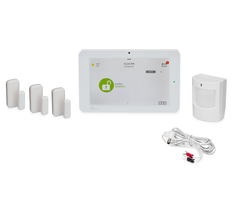
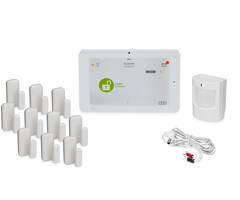
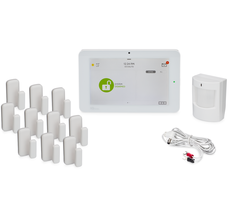
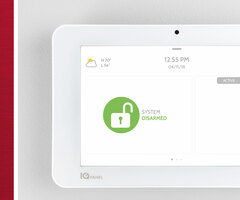
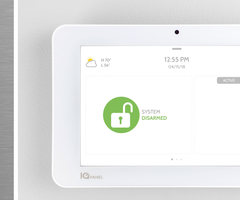
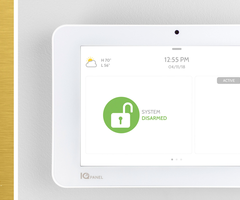


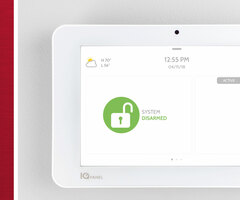

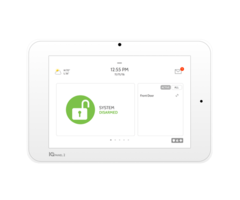
Related Categories
- Answered
- Answered By
- Julia Ross
